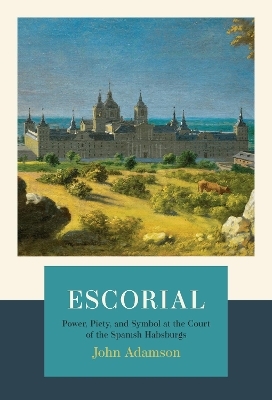
Escorial
The Habsburgs and the Golden Age of Spain
Seiten
2025
Apollo (Verlag)
978-1-78954-231-8 (ISBN)
Apollo (Verlag)
978-1-78954-231-8 (ISBN)
- Noch nicht erschienen (ca. März 2025)
- Portofrei ab CHF 40
- Auch auf Rechnung
- Artikel merken
A portrait of the court of the Spanish Habsburgs during Spain's sixteenth and seventeenth-century 'Golden Age'.
A portrait of the rhythms and rituals of the magnificent court of the Spanish Habsburgs during Spain's sixteenth- and seventeenth-century 'Golden Age'.
Of all the European courts between the Renaissance and the French Revolution, none exercised a greater influence than the court of the Spanish Habsburgs in the Castilian fastness of El Escorial, northwest of Madrid. Their rule in the Iberian Peninsula – from 1516, when the dynasty acquired the Kingdoms of Castile and Aragon until the extinction of the Spanish Habsburg line in 1700 – coincided with Spain's 'Golden Age'.
And for much of that period the Iberian kingdoms constituted Europe's dominant imperial superpower. Its ships, settlers, soldiers and priests extended Spanish Habsburg rule from Peru in the Americas to its faraway colonies in the Philippines (the one Asian state that still bears the name of a Spanish Habsburg king). And the wealth that flowed in from these global possessions – gold, silver, sugar, spices, exotic woods – sustained a court that for much of the sixteenth and seventeenth centuries was the most opulent and magnificently housed in Europe.
A portrait of the rhythms and rituals of the magnificent court of the Spanish Habsburgs during Spain's sixteenth- and seventeenth-century 'Golden Age'.
Of all the European courts between the Renaissance and the French Revolution, none exercised a greater influence than the court of the Spanish Habsburgs in the Castilian fastness of El Escorial, northwest of Madrid. Their rule in the Iberian Peninsula – from 1516, when the dynasty acquired the Kingdoms of Castile and Aragon until the extinction of the Spanish Habsburg line in 1700 – coincided with Spain's 'Golden Age'.
And for much of that period the Iberian kingdoms constituted Europe's dominant imperial superpower. Its ships, settlers, soldiers and priests extended Spanish Habsburg rule from Peru in the Americas to its faraway colonies in the Philippines (the one Asian state that still bears the name of a Spanish Habsburg king). And the wealth that flowed in from these global possessions – gold, silver, sugar, spices, exotic woods – sustained a court that for much of the sixteenth and seventeenth centuries was the most opulent and magnificently housed in Europe.
John Adamson is a Fellow of Peterhouse at the University of Cambridge. His books include The Noble Revolt: the Overthrow of Charles I (2007), and two edited collections, The Princely Courts of Europe (1999); and The English Civil War: Conflict and Contexts (2009). He has been a Visiting Fellow at Yale University and at the University of California, Los Angeles, He is a regular reviewer for the London Sunday Telegraph, the Sunday Times, the Financial Times, the Literary Review, and The Times Literary Supplement.
| Erscheinungsdatum | 28.01.2022 |
|---|---|
| Zusatzinfo | 35 integrated colour |
| Sprache | englisch |
| Maße | 135 x 200 mm |
| Themenwelt | Geisteswissenschaften ► Geschichte ► Allgemeines / Lexika |
| Geschichte ► Allgemeine Geschichte ► Neuzeit (bis 1918) | |
| Geisteswissenschaften ► Geschichte ► Regional- / Ländergeschichte | |
| Geschichte ► Teilgebiete der Geschichte ► Wirtschaftsgeschichte | |
| ISBN-10 | 1-78954-231-6 / 1789542316 |
| ISBN-13 | 978-1-78954-231-8 / 9781789542318 |
| Zustand | Neuware |
| Haben Sie eine Frage zum Produkt? |
Mehr entdecken
aus dem Bereich
aus dem Bereich
Europa 1848/49 und der Kampf für eine neue Welt
Buch | Hardcover (2023)
DVA (Verlag)
CHF 67,20
Giordano Bruno - ein ketzerisches Leben
Buch | Hardcover (2024)
C.H.Beck (Verlag)
CHF 41,85


